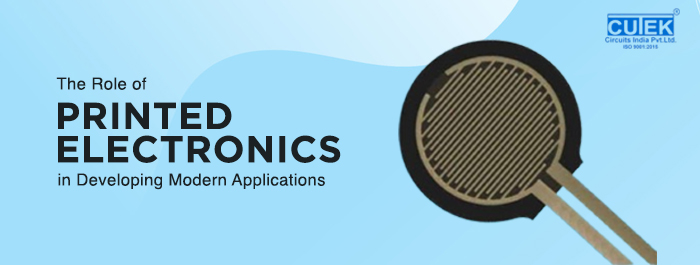The Role of Printed Electronics in Developing Modern Applications
Technology advancements have revolutionized modern applications, making them more efficient, useful, and value-driven. One of the most prominent technologies used in recent times is printed electronics. It is used in creative electronic devices by printing conductive materials on rigid or flexible substrates. These are different from conventional electronics manufacturing which involves sophisticated fabrication techniques. As for modern applications, these offer numerous commercial, technical, and operational benefits. Let’s overview their role in this blog.
6 Modern Applications of Printed Electronics
Let’s look at six common applications of printed electronics in recent times.
1. Keyboards
The use of printed electronics is common in membrane keyboards. It involves printing conductive traces onto thin flexible sheets, which form layers that register keypresses when pressed together. Membrane keyboards usually have a low profile, are lightweight, and have lower operational costs than mechanical keyboards.
It is also used in manufacturing touch and capacitive keyboards. In these keyboards, printed conductive ink or materials work as sensors to detect keypresses without moving the keys physically.
2. Smart Packaging
Amidst rising concerns for product quality, packaging becomes more crucial than ever. Printed electronics are helping enhance packaging, making it smarter and more efficient than ever by integrating displays, sensors, and Near Field Communication (NFC). Smart labels and packaging help monitor humidity, temperature, and wastage, particularly across the logistics, pharmaceutical, and food sectors. These contemporary features help keep the product fresh, safe, and traceable across the supply chain.
3. Transportation
Lately, automobiles have undergone significant transformations. It is one of the many technologies driving this shift. For instance, these are used for smart surfaces, flexible touchscreens, and sensor integration. Flexible circuits can be integrated into cars for smart seating, lighting, and dashboards. Furthermore, printed sensors monitor the vehicle’s performance and tire pressure.
4. Defense
Modern warfare and security demand advanced technology-driven solutions for effective monitoring and ensuring preparedness at every moment. Printed electronics is one technology helping serve this need. For example, integrating flexible antennas, sensors and circuits into drones, aircraft, and satellites helps monitor, communicate, and transmit data more efficiently and effectively.
5. Environment
As every country commits to global sustainability goals, the role of technology in achieving them becomes more imminent. One of the examples of it is the use of printed sensors in environmental monitoring. These sensors help detect temperature changes, moisture levels, and pollutants, enabling much better and more efficient monitoring of the surrounding environmental conditions.
6. Prototyping
Experimentation is the foundation of every innovation. As the world awaits the next breakthrough, printed electronics will have a much more significant role in driving innovations. How? The technology allows for rapid prototyping and custom electronics design, enabling designers to test new ideas more quickly. It particularly helps startups and research organizations that work on new ideas, innovations, and less common applications.
Looking for Printed Electronics-Based Modern Keyboards?
Choose Cutek Circuits. We are a leading printed electronics manufacturer, producing keyboards equipped with printed electronics technology. Our customer-centric and innovative approach, along with an unmatched and proven credibility in keyboard manufacturing make us one of the most trusted printed electronics suppliers. Please visit us to explore how our keyboards can deliver value to your business.




